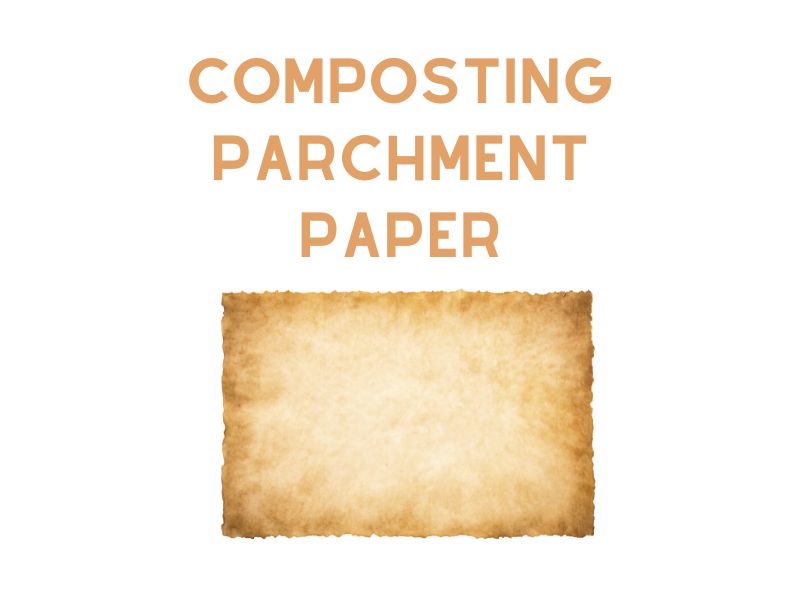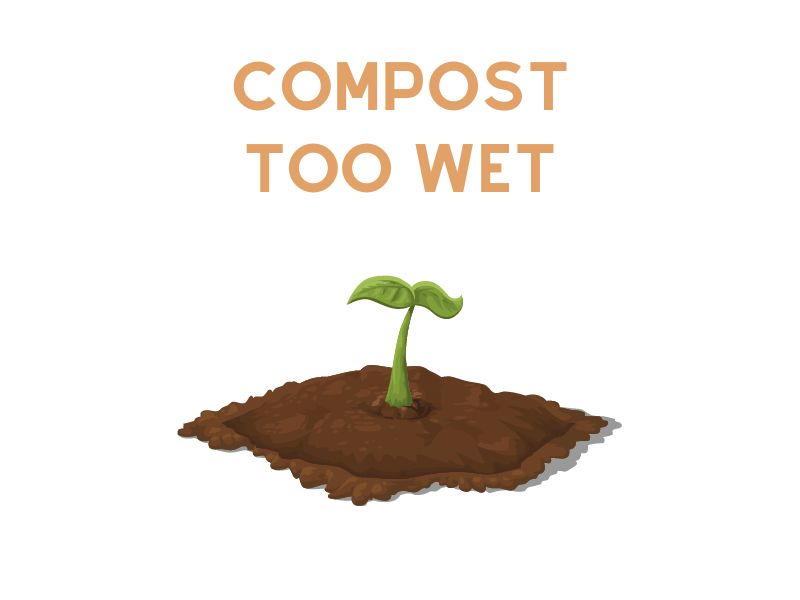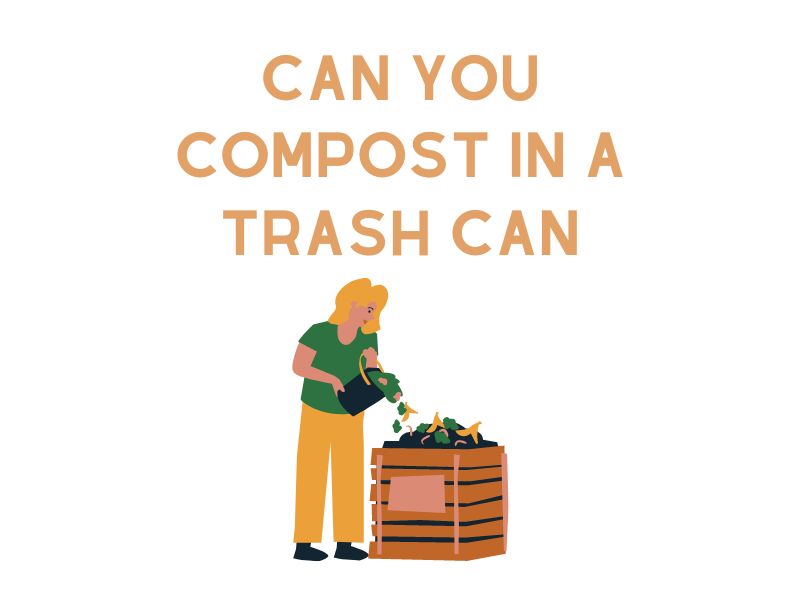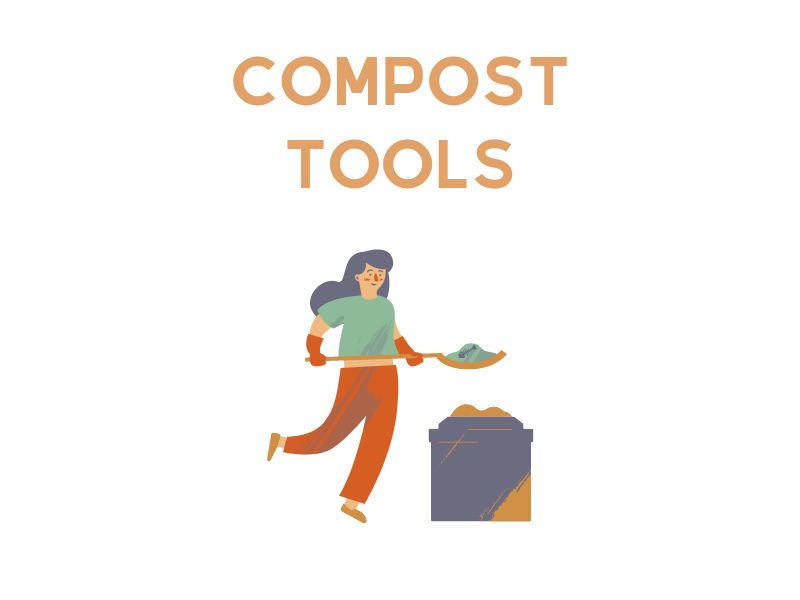In the face of environmental challenges that our world grapples with, each step we take towards a more sustainable lifestyle makes a crucial difference. Waste management is a significant part of this endeavor, given the staggering amount of waste we collectively generate. A key aspect of waste management lies in the ancient yet increasingly relevant practice of composting – turning our organic waste into nutrient-rich soil conditioner.
This simple, yet highly effective method of recycling organic material not only reduces the amount of waste ending up in landfills but also enriches the soil in our gardens. But to effectively leverage composting in our daily lives, it’s important to understand what can and cannot go into our compost piles.
Often, we come across items that make us pause and wonder if they’re compostable. One such common household item is parchment paper. Used extensively in our kitchens, particularly for baking, parchment paper often ends up in our trash bins. But can it instead find its way into the compost pile?
The answer to this question may not be as straightforward as you might think, considering the production process and the components of parchment paper. This article seeks to delve deeper into this question, exploring whether parchment paper can be composted, the potential environmental impacts of doing so, and the various sustainable practices we can adopt as alternatives. Let’s embark on this journey towards better waste management together.
Understanding Parchment Paper
Before we delve into the compostability of parchment paper, it’s essential to grasp what it is and how it’s made. Parchment paper, also commonly known as bakery paper, is an indispensable tool for bakers and cooks worldwide. Known for its heat-resistant and non-stick properties, it is commonly used to line baking sheets and cake pans, facilitating the easy release of baked goods without the need for additional grease.
Parchment paper starts its life much like any other paper, made from cellulose fibers derived from wood. The transformation of ordinary paper into parchment paper happens through a specific process called ‘parchmentizing’. In this process, sheets of paper pulp are passed through a bath of sulfuric acid or sometimes zinc chloride. This bath partially dissolves or gelatinizes the paper, which, after a thorough washing and drying process, results in a dense, non-stick, and heat-resistant material that we know as parchment paper.
Furthermore, some parchment paper is coated with a thin layer of silicone to enhance its non-stick properties. Some manufacturers may also bleach their parchment paper to give it a clean, white appearance. This treatment, while enhancing its utility in the kitchen, also introduces additional considerations when assessing its compostability.
Understanding the composition and manufacturing process of parchment paper is crucial when we try to determine its impact on the environment and its place in our composting routines.
Compostability of Various Types of Paper
When it comes to composting paper products, it’s important to recognize that not all papers are the same. Their compostability is largely determined by their composition and the treatments they’ve undergone during production.
Starting with the most compost-friendly, untreated, dye-free paper products such as newspapers, cardboard, or basic printer paper are typically excellent compost materials. They are classified as “brown” matter, providing much-needed carbon to balance the nitrogen-rich “green” matter, like vegetable scraps or grass clippings. Moreover, these untreated papers break down relatively quickly and smoothly in a compost pile, aiding in creating rich, well-textured compost.
However, moving along the spectrum, paper products with additional treatments or additives might not be as compost-friendly. For instance, glossy or coated papers, such as magazines, photo paper, or coated cardboard boxes, can pose challenges. These types of papers are often treated with plastic or clay coatings to give them their shiny, smooth finish. Additionally, they may contain heavy metals or other toxins used in the inks and dyes for printing, which are not compostable and could potentially harm your compost pile and the soil it would eventually enrich.
Paper products like receipts are another category to be wary of. Many of them are printed on thermal paper, which is coated with a substance that can be harmful when it breaks down. This substance, bisphenol A (BPA), has been linked to health and environmental issues, making these receipts unsuitable for composting.
As we proceed to explore the compostability of parchment paper, understanding these distinctions among different paper types is invaluable. It gives us a benchmark to evaluate the parchment paper, guiding us toward an informed decision.
Is Parchment Paper Compostable?
Now, let’s focus on the central question that’s brought us here – Is parchment paper compostable? The answer is not a straightforward yes or no. It requires a detailed understanding of the composting process and the unique attributes of parchment paper itself.
To start with, parchment paper, being a paper product, is primarily composed of cellulose fibers, which are biodegradable. This fact might lead us to conclude that it should be compostable. However, the process of making parchment paper, and the additional treatments it undergoes, complicates matters.
The primary concern is the non-stick property of parchment paper, which is often achieved using a silicone coating. Silicone, being a synthetic material primarily composed of silicon, oxygen, and sometimes other elements like carbon and hydrogen, does not easily break down in a composting environment. Hence, parchment paper coated with silicone might leave behind minute silicone residues in the compost, which isn’t ideal.
Furthermore, the chemical process that regular paper undergoes to become parchment paper involves treatments that could potentially leave behind residues. Parchment paper can also be bleached for a cleaner appearance, which may introduce dioxins, a class of chemical compounds linked to environmental and health concerns.
However, despite these considerations, it’s worth noting that parchment paper can be composted under certain conditions. The parchment paper’s quantity is a significant factor – composting a small amount may have a negligible impact on the overall quality of the compost. Shredding the paper into smaller pieces can also aid in its breakdown, even though it might take longer than other types of paper. Additionally, industrial composting facilities that process compost at higher temperatures may be more successful at breaking down parchment paper.
The critical takeaway here is that while parchment paper can technically be composted, it is not as compost-friendly as untreated paper products and requires careful handling and specific conditions for optimal decomposition.
Potential Environmental Impact of Composting Parchment Paper
Understanding the potential environmental impact of composting parchment paper is key to making an informed decision about whether to include it in your compost pile. The environmental implications of this act are multifaceted and encompass both positive and negative aspects.
On the positive side, composting parchment paper contributes to overall waste reduction efforts. Any organic material that can be composted instead of being sent to a landfill helps reduce methane emissions, a potent greenhouse gas that’s produced when organic waste decomposes in an anaerobic landfill environment. Composting turns this ‘waste’ into a valuable resource – nutrient-rich compost – that can enhance soil fertility and sequester carbon, thereby contributing to carbon offset.
However, these benefits must be weighed against the potential negative impacts. One such concern lies in the silicone coating commonly found on parchment paper. Silicone, while considered inert and relatively harmless, does not decompose readily in a compost pile. Thus, composting large quantities of parchment paper could potentially lead to minute silicone residues in the compost. The long-term impacts of such residues on soil health and the wider ecosystem are not fully understood yet but are a point of concern.
Furthermore, some parchment paper may be bleached or contain other chemical additives that could harm the composting process. These chemicals may not fully break down during composting, potentially contaminating the compost and, eventually, the soil and plants where the compost is applied.
In terms of the composting process itself, while parchment paper is classified as a ‘brown’ or carbon-rich material, it breaks down much slower than most other browns due to the treatments it undergoes. Hence, introducing too much parchment paper into a compost pile can disrupt the pile’s balance and slow down the composting process.
In essence, while composting parchment paper may seem like a good step toward waste reduction, it is crucial to consider these potential environmental impacts. A mindful approach to composting, keeping in mind the type and quantity of parchment paper used, can help mitigate these concerns.
Guidelines for Composting Parchment Paper
If you’ve made the decision to include parchment paper in your compost pile, it’s crucial to follow certain guidelines to ensure the best outcomes for your compost and minimize potential environmental impact. Here are some detailed steps to consider:
- Use in moderation: Balance is key in composting. Parchment paper, like other “brown” or carbon-rich materials, should not dominate your compost pile. It should be balanced with a good mix of “green” or nitrogen-rich materials like vegetable scraps, grass clippings, or coffee grounds. Remember, parchment paper takes longer to break down compared to other “brown” materials, so it should constitute a minor fraction of your compost pile.
- Shred the paper: Breaking down the parchment paper into smaller pieces before adding it to the compost heap can significantly aid decomposition. Smaller pieces have a larger surface area for composting organisms to work on, speeding up the process. However, even shredded parchment paper will decompose slower than other paper products due to its treatment and potential silicone coating.
- Choose unbleached and untreated versions: If possible, opt for parchment paper that hasn’t been bleached or treated with additional chemicals. These types are more environmentally friendly and would pose less potential risk to your compost, soil, and plants.
- Consider industrial composting facilities: If you have access to a local industrial composting facility, it may be a better place to dispose of parchment paper. These facilities often compost at higher temperatures, which can help break down materials that are tougher to compost at home, like parchment paper.
- Monitor your compost: Keep an eye on your compost pile. If you notice the parchment paper isn’t breaking down, or if it seems to be negatively affecting the composting process, it may be best to remove it and reconsider its use.
These guidelines aim to help you navigate the composting of parchment paper. With a mindful approach, it is possible to incorporate this common kitchen waste into your composting routine, albeit with caution and awareness of its potential impacts.
Alternatives to Parchment Paper for More Sustainable Practices
If the compostability of parchment paper concerns you, consider alternatives such as silicone baking mats, beeswax wraps, or greased glass or ceramic baking dishes. Silicone baking mats, for example, are reusable, eliminating the waste issue altogether.
Conclusion
Navigating the complexities of waste management and sustainable living often leads us to grapple with intricate questions. One such question we’ve explored in this article is the compostability of parchment paper. It’s a query that opens up a broader conversation about the materials we use in our everyday lives and their impacts on our environment.
Parchment paper, with its unique properties and manufacturing process, presents a conundrum. On the one hand, it is derived from cellulose fibers, which are biodegradable and compostable. On the other, the treatments it undergoes and the potential coatings it carries complicate its compostability and present potential environmental concerns.
In essence, while parchment paper can technically be composted, it’s not as compost-friendly as other untreated paper products. If you decide to compost parchment paper, do so mindfully, following the guidelines we’ve outlined, such as using in moderation, shredding the paper, choosing untreated versions, considering industrial composting facilities, and keeping a close eye on your compost pile.
As we strive towards more sustainable lifestyles, it’s essential to be aware of the materials we use and their end-life. Even small choices like deciding what to compost can cumulatively make a significant difference. Each step we take on this journey is a step towards a healthier planet.
Ultimately, the question of composting parchment paper underscores the importance of continuing to look for innovative solutions and alternatives that allow us to balance convenience and sustainability in our day-to-day lives. It encourages us to challenge the status quo and make conscious decisions that contribute to a healthier planet for future generations.





